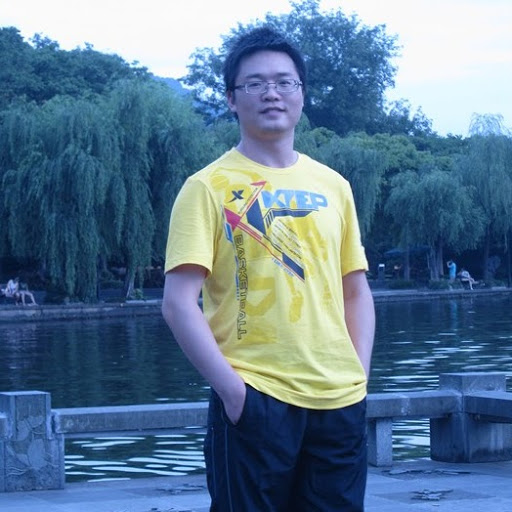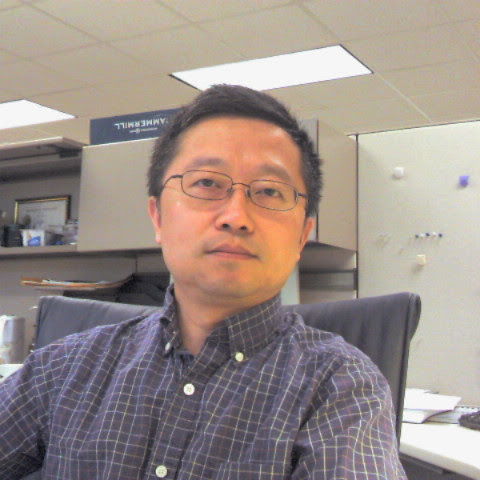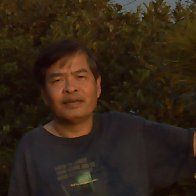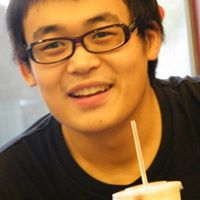Jun Zhou
age ~37
from Las Vegas, NV
- Also known as:
-
- Jun Aho
- Michael Harris
- Phone and address:
-
5160 Briar Meadow Way, Las Vegas, NV 89118
7024969549
Jun Zhou Phones & Addresses
- 5160 Briar Meadow Way, Las Vegas, NV 89118 • 7024969549
- San Jose, CA
- Fremont, CA
Work
-
Company:Rieser building groupJan 2013
-
Position:Civil engineer intern
Education
-
School / High School:University of California, Davis- Davis, CA2010
-
Specialities:Civil Engineering master program in Civil Engineering,Structural Engineering
Skills
Skilled in Computer and Microsoft Office • AutoCAD 2010 • SAP 2000 • Matlab
Languages
English
Specialities
Acupuncture
Lawyers & Attorneys

Jun Zhou - Lawyer
view sourceOffice:
Jun He Law Offices
Specialties:
Corporate Law
Foreign Investment
Mergers and Acquisitions
Project Finance
Foreign Investment
Mergers and Acquisitions
Project Finance
ISLN:
918407366
Admitted:
1992
Law School:
Beijing University Law School, LL.B., 1991
Resumes

Jun Zhou South San Francisco, CA
view sourceWork:
Rieser Building Group
Jan 2013 to Present
Civil Engineer Intern Olympia Institute
Sep 2011 to Present
Lead Tutor Civil Engineering Department, University of California, Davis
Davis, CA
Aug 2008 to Aug 2010
Research Assistant
Jan 2013 to Present
Civil Engineer Intern Olympia Institute
Sep 2011 to Present
Lead Tutor Civil Engineering Department, University of California, Davis
Davis, CA
Aug 2008 to Aug 2010
Research Assistant
Education:
University of California, Davis
Davis, CA
2010 to 2011
Civil Engineering master program in Civil Engineering,Structural Engineering University of California, Davis
Davis, CA
2007 to 2010
Bachelor of Science in Civil Engineering City College of San Francisco
San Francisco, CA
2004 to 2007
Associate of Science in Engineering
Davis, CA
2010 to 2011
Civil Engineering master program in Civil Engineering,Structural Engineering University of California, Davis
Davis, CA
2007 to 2010
Bachelor of Science in Civil Engineering City College of San Francisco
San Francisco, CA
2004 to 2007
Associate of Science in Engineering
Skills:
Skilled in Computer and Microsoft Office, AutoCAD 2010, SAP 2000, Matlab
Name / Title
Company / Classification
Phones & Addresses
Developer Technical Support
Palm, Inc.
Radio and Television Broadcasting and Communi...
Radio and Television Broadcasting and Communi...
950 W Maude Ave, Sunnyvale, CA 94085
President
Techshino (America) Technology Co., Ltd
Nonclassifiable Establishments
Nonclassifiable Establishments
3592 Rosemead Blvd, Rosemead, CA 91770
10 S 3 St, San Jose, CA 95113
10 S 3 St, San Jose, CA 95113
Director
Smart Forwarding Agency Inc
President
UNU Electronics Inc.
Consumer Electronics · Ret Misc Merchandise · Whol Electronic Parts/Equipment · Electronic Repair
Consumer Electronics · Ret Misc Merchandise · Whol Electronic Parts/Equipment · Electronic Repair
Union City, CA 94587
29410 Un City Blvd SUITE A, Union City, CA 94587
24700 Msn Blvd, Hayward, CA 94544
5104886227, 5103639478
29410 Un City Blvd SUITE A, Union City, CA 94587
24700 Msn Blvd, Hayward, CA 94544
5104886227, 5103639478
President, Principal
Sacred Heart Clinic Inc
Medical Doctor's Office
Medical Doctor's Office
20395 Pacifica Dr, Cupertino, CA 95014
4087259188
4087259188
President
Teda Technologies Interantional Inc
President
FLYBIRD SYSTEMS, INC
1440 Koll Cir STE 103, San Jose, CA 95112
Managing
Yffs LLC
Real Estate Investment
Real Estate Investment
Us Patents
-
Unlocking Vehicle Doors With Facial Recognition
view source -
US Patent:20220410841, Dec 29, 2022
-
Filed:Aug 25, 2022
-
Appl. No.:17/895144
-
Inventors:- San Francisco CA, US
Robin Yang - San Francisco CA, US
Jiajian Zhou - San Francisco CA, US
Jackie Shannon - San Francisco CA, US
Jun Zhou - San Francisco CA, US
Divya Thakur - San Francisco CA, US
Alex Van Dorn - San Francisco CA, US -
International Classification:B60R 25/25
G06Q 10/02
G06V 40/16
G06Q 50/30 -
Abstract:The subject disclosure relates to ways to authenticate a rider/user of an autonomous vehicle (AV) using biometric data, such as facial recognition. A process of the disclosed technology can facilitate the automatic unlocking of an AV by performing steps that include: receiving a dispatch request associated with a user identifier (ID), receiving a recognition model that corresponds with the user ID, and receiving an image stream including images of pedestrian faces. In some aspects, the process can further include steps for: providing the images to the recognition model, and determining if a user represented in the images corresponds with the user ID. Systems and machine-readable media are also provided.
-
System And Method For Calibrating On-Board Vehicle Cameras
view source -
US Patent:20200034988, Jan 30, 2020
-
Filed:Jul 29, 2019
-
Appl. No.:16/524628
-
Inventors:- Cayman Islands, KY
Jun Zhou - Mountain View CA, US -
International Classification:G06T 7/80
G06T 7/70
H04N 17/00
H04N 5/247
G01S 17/02
B60R 11/04 -
Abstract:Provided herein are methods for calibrating a camera. The method may include capturing an image that includes at least a traffic sign. The location of the traffic sign using the image may then be determined, which may include taking as input the location and direction of the vehicle and the location and the direction of the camera relative to the vehicle. The method may also include obtaining an actual location of the traffic sign. The camera may be determined to require recalibration if the determined location is different from the actual location.
-
Offline Combination Of Convolutional/Deconvolutional And Batch-Norm Layers Of Convolutional Neural Network Models For Autonomous Driving Vehicles
view source -
US Patent:20180253647, Sep 6, 2018
-
Filed:Mar 6, 2017
-
Appl. No.:15/451345
-
Inventors:- Sunnyvale CA, US
XIAO BO - Sunnyvale CA, US
JUN ZHOU - Sunnyvale CA, US
WEIDE ZHANG - Santa Clara CA, US
TONY HAN - Sunnyvale CA, US -
International Classification:G06N 3/08
G06N 3/04
G06F 17/16 -
Abstract:In one embodiment, a system to accelerate batch-normalized convolutional neural network (CNN) models is disclosed. The system extracts a plurality of first groups of layers from a first CNN model, each group of the first groups having a first convolutional layer and a first batch-norm layer. For each group of the plurality of first groups, the system calculates a first scale vector and a first shift vector based on the first batch-norm layer, and generates a second convolutional layer representing the corresponding group of the plurality of first groups based on the first convolutional layer and the first scale and the first shift vectors. The system generates an accelerated CNN model based on the second convolutional layer corresponding to the plurality of the first groups, such that the accelerated CNN model is utilized subsequently to classify an object perceived by an autonomous driving vehicle (ADV).
-
Apparatus, Systems And Methods For Container Based Service Deployment
view source -
US Patent:20170257432, Sep 7, 2017
-
Filed:May 22, 2017
-
Appl. No.:15/601993
-
Inventors:- San Jose CA, US
VENKAT NARAYAN SRINIVASAN - Fremont CA, US
JUN ZHOU - Mountain View CA, US -
International Classification:H04L 29/08
G06F 9/50 -
Abstract:Embodiments disclosed facilitate distributed orchestration and deployment of a single instance of a distributed computing application over a plurality of clouds and container clusters, including container clusters provided through a Container as a Service (CaaS) offering. In some embodiments, system and pattern constructs associated with a hybrid distributed multi-tier application may be used to obtain an infrastructure independent representation of the distributed multi-tier application. The infrastructure independent representation may comprise a representation of an underlying pattern of resource utilization of the application. Further, the underlying pattern of resource utilization of the application may be neither cloud specific nor container cluster specific. In some embodiments, a single instance of the hybrid distributed multi-tier application may be deployed on a plurality of cloud infrastructures and on at least one container cluster, based, in part, on the cloud-infrastructure independent representation of the application.
Medicine Doctors

Jun Zhou, Cupertino CA
view sourceSpecialties:
Acupuncture
Address:
20395 Pacifica Dr Suite 105, Cupertino, CA 95014
4087259188 (Phone)
4087259188 (Phone)
Languages:
English
Googleplus

Jun Zhou
Work:
Tencent
Education:
Huazhong Agricultural University,China - Computer Science and Technology
Tagline:
Over the Great Wall

Jun Zhou
Relationship:
Single
About:
独自生活并享受一个人...
Bragging Rights:
未婚

Jun Zhou
Education:
Università degli Studi di Padova - Ingegneria dell'Energia

Jun Zhou

Jun Zhou
Work:
Jack

Jun Zhou

Jun Zhou

Jun Zhou
Youtube
Myspace

Zhou Jun Zhou Jun
view source
Jun de Zhou
view source
Werner Jun Zhou
view source
Teresa Li Jun Zhou
view source
Jun Zhou
view source
Edis Jun Zhou
view source
Jun Qiang Zhou
view source
Jun Zhou
view sourceFlickr
Plaxo

zhou jun
view sourceBank of China
Get Report for Jun Zhou from Las Vegas, NV, age ~37













